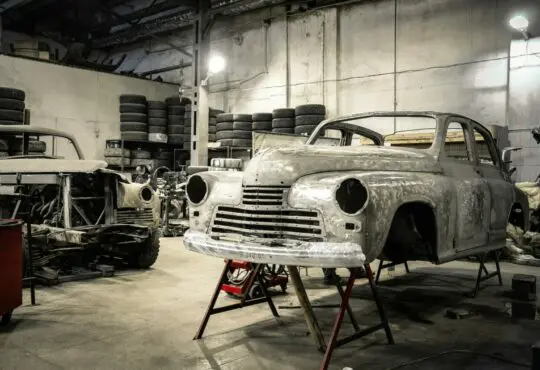
New Zealand’s Automotive Industry and the Impact of Urbanization
New Zealand’s automotive industry is experiencing a period of strong growth due to increased urbanization, economic development and technological advancements. As the country’s population continues to grow and urban areas expand, demand for vehicles continues to rise. This has led to an increase in the production of cars, buses, trucks and motorcycles in New Zealand, as well as an increase in the number of vehicle-related services. In this article, we’ll take a look at how urbanization is affecting the New Zealand automotive industry, and how the industry is adapting to the changing environment.
New Zealand’s Growing Automotive Industry
New Zealand’s automotive industry is performing strongly. According to data from the New Zealand Transport Agency, the total number of motor vehicles in New Zealand grew by 4.8% from 2017 to 2018, and the number of registered light vehicles reached a new all-time high of 4.1 million in 2018. This growth is being driven by a combination of economic factors, such as rising incomes, increased access to finance and improved transport infrastructure, as well as population growth.
The strong growth of the automotive industry in New Zealand is also supported by increasing demand for vehicles. This is driven by a combination of urbanization, economic development and technological advancements. As cities become more densely populated, the need for individual transportation increases and the demand for vehicles grows. At the same time, economic development has made vehicle ownership more accessible and technology advancements have driven down production costs and improved the performance of cars, buses and trucks.
Impact of Urbanization on Automotive Industry
Urbanization is having a significant impact on the New Zealand automotive industry. As cities expand, roads become more congested, leading to increased demand for cars, buses and trucks. At the same time, increased urbanization has led to increased demand for services such as Uber and Lyft, as well as for vans and other commercial vehicles.
Urbanization is also driving technological advancements in the automotive industry. As cities become more densely populated, cars need to become smarter and more efficient in order to cope with the increased traffic. This is driving the development of autonomous vehicles, electric vehicles, connected cars and other technology-enabled transportation solutions.
The Challenges Faced by New Zealand’s Automotive Industry
Despite the strong growth of the automotive industry in New Zealand, there are several challenges that the industry needs to overcome in order to continue to grow.
- Environmental Challenges: The automotive industry has a significant environmental footprint. As cities become more densely populated and the demand for vehicles increases, air pollution, noise pollution and other environmental issues become more of a concern.
- Infrastructure Challenges: As cities become more congested, the need for improved transport infrastructure becomes more pressing. This requires significant investment in roads, public transport and other infrastructure.
The automotive industry is also facing a challenge from the increasing popularity of ride-sharing services, such as Uber and Lyft, which are reducing the need for individual car ownership. The industry is also facing increased competition from other transport options, such as cycling and public transport.
Opportunities for the Automotive Industry
Despite the challenges, the automotive industry in New Zealand is also facing several opportunities.
- Technology: As cities become more congested and the need for improved transportation solutions rises, technology is playing an increasingly important role in the automotive industry. Autonomous vehicles, electric vehicles, connected cars and other technology-enabled solutions are providing new opportunities for the industry.
- Innovation: The automotive industry is constantly innovating in order to meet the changing needs of consumers. Companies are investing in research and development to create new products and services that make car ownership more accessible and efficient.
The automotive industry in New Zealand is also facing opportunities from the increasing popularity of ride-sharing services, as well as from the development of shared mobility services, such as car-sharing and bike-sharing.
Conclusion
Urbanization is having a significant impact on New Zealand’s automotive industry. As cities become more densely populated, the demand for vehicles is increasing and the industry is adapting to meet the changing needs of consumers. While the industry is facing some challenges, such as environmental issues and increased competition from other transport options, there are also opportunities for growth, such as from technological advancements and innovation. The industry is well-positioned to take advantage of these opportunities and continue to grow.



